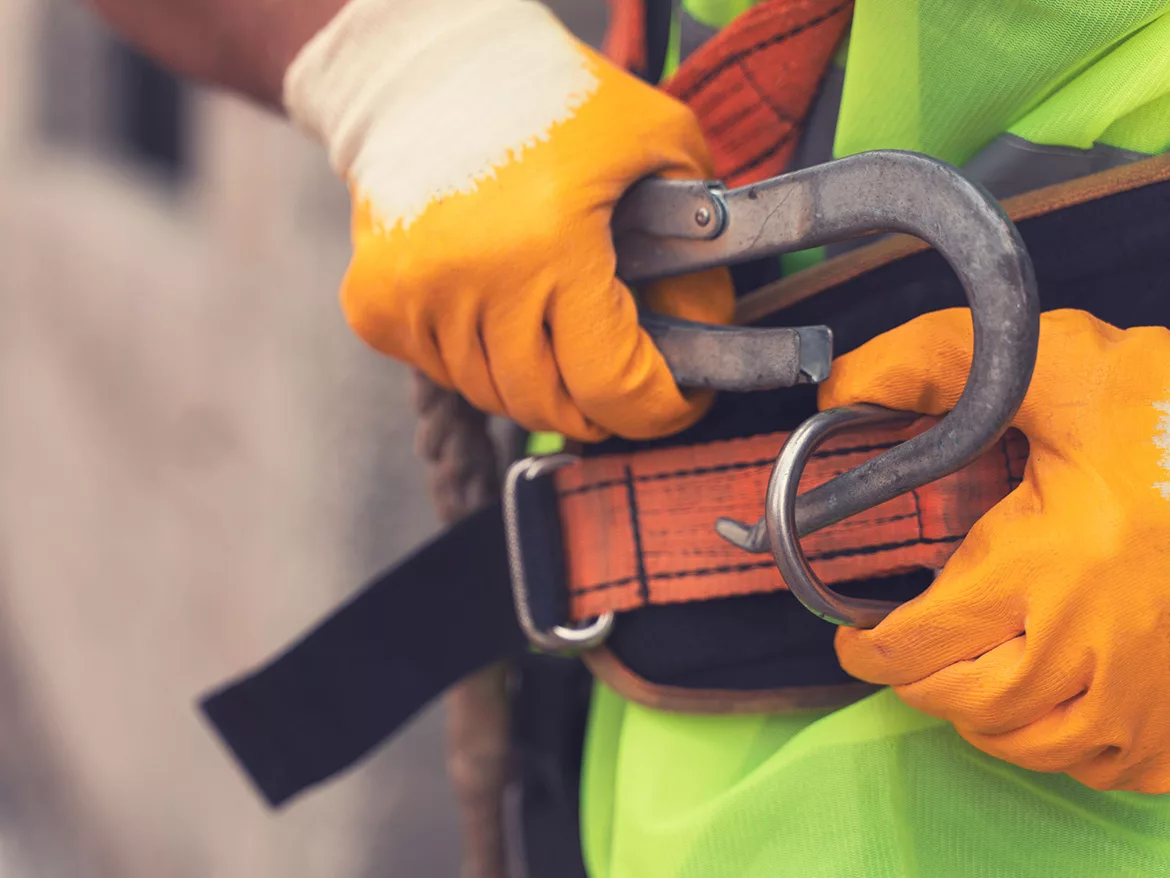Top 10 Safety Tips for 2021
Help Protect Your Team from Accidents, Injuries and Illness

There’s a lot happening on a jobsite, but your team’s health and safety should be your top priority. Here are 10 safety tips to help your team avoid accidents, injuries and illnesses.
1. Identify Potential Jobsite Risks
Knowing what safety risks exist can help you make sure you have the proper training, equipment and processes in place. At each new jobsite, identify the safety and health hazards, determine a plan to eliminate the hazards, then follow up to make sure they have been handled appropriately. Having a checklist with these steps can help keep you accountable for your team’s safety. If you’re unsure how to start identifying safety risks, the Occupational Safety and Health Administration (OSHA) offers free safety consultations for small and medium-sized businesses.
2. Establish Protocol for Public Health Crises
Before 2020, many companies had no protocol in place for dealing with public health crises. COVID-19 demonstrated just how important having a plan is. Establish protocols your team will follow should protective measures need to be enforced. For example:
- Employees should work at least 6 feet away from each other when possible
- Provide personal protective equipment like masks to decrease the spread of germs
- Provide dedicated tools to each team member and regularly disinfect shared equipment
While the vaccine rollout provides hope that COVID-19 won’t be an issue for much longer, it’s good to have a plan in place should another similar crisis occur. The Centers for Disease Control and your local public health department are good resources for more information on how to stay safe during a public health crisis when news and recommendations can change quickly.
3. Familiarize Yourself With Industry Safety Standards
Become knowledgeable about the roofing and construction industries’ safety standards so that you can put these guidelines into practice on your jobsites. OSHA is a great resource for safety practices. For example, learn how to handle flammable roofing adhesives on OSHA’s website and ensure that each team member who works on a roof receives fall protection training.
4. Train Your Team
The responsibility for keeping the team safe isn’t only on you. Provide regular safety training for all employees — not just new ones. Also, have a process in place for updating your team on any new safety regulations that arise or how to use new products safely. For example, at the beginning of the workday, hold a short demonstration on how to use a new tool.
It’s equally important to train your team to report any unsafe behaviors, so the burden to spot them is not all on you. Establish a process they can follow for confidentially reporting any unsafe practices by their coworkers.
5. Use a Logbook to Record Accidents and Injuries
You should also have a system — even something as simple as a spreadsheet will do — to track accidents. If the same type of accident is happening repeatedly or always involves the same people, you’ll be able to see a trend and better address what’s happening and how to prevent it in the future. All employers must comply with OSHA’s injury and illness reporting requirements, and unless specifically exempted, companies with more than 10 employees need to follow OSHA’s recordkeeping requirements.
6. Have the Right Safety Equipment
Your employees can’t work safely without the proper equipment. Make a list of all the necessary jobsite safety equipment you need to have, including safety glasses, hard hats, protective footwear, gloves and sun protection equipment. Also know what types of equipment you need for specific jobs. For example, OSHA requires workers exposed to a fall of 6 feet or more to be provided with fall protection equipment. Also, keep track of any regular inspections to equipment that will ensure it’s running properly and safely.
7. Keep Emergency Medical Information On Hand
No matter how much you prepare and plan, an on-the-job injury can still happen. Always have your employees’ emergency contact info on hand. Keep in mind that if your jobsites encompass a wide area, you’ll want to keep track of all the hospitals within it. Know your insurance provider’s contact info and steps for reporting the accident for insurance purposes, such as taking photos or writing a report of what happened. Also, outline the steps you’ll need to take — such as communicating with your employees and the property owner — to manage the accident properly.
8. Use Safety Apps
Many mobile apps can help increase safety on the jobsite. The StaySafe app, for example, is useful for members of your team who are working on their own. It has multiple features that prompt team members to check in with project managers and offers a panic button if they need immediate assistance. Another useful app is the NIOSH Ladder Safety App. It features a measurement tool that can help adjust ladders to the correct angle and a guide that helps identify the right size and type of ladder needed for a job.
9. Monitor Dangers With Site Sensors
There are often so many potential risks on a jobsite that it can feel overwhelming to keep track of them all. Site sensors can help by monitoring for dangerous temperatures, gas leaks or noise levels. The sensors can send alerts to phones or laptops if jobsite conditions are approaching hazardous levels.
10. Prevent Heat Stress
Summer is around the corner, and for many places in the U.S., that also means hot, sunny days are on the way. To prevent your team from succumbing to heat stress, adjust your job schedules to avoid working too long or hard in the middle of the day. Also, create a cooling station for your employees with a shady spot and water or sports drinks, and encourage your team members to take breaks as needed.
With these 10 tips, you can better keep your team safe while on the job. For more advice on ensuring your team is safe and successful, visit the ABC Supply blog.
The advice given herein is provided for general educational and information purposes only. It is not intended to constitute legal or other advice or services and should not be used in place of consultation with appropriate professionals. The advice given does not create any warranty. Reliance on such advice is solely at your own risk.
Looking for a reprint of this article?
From high-res PDFs to custom plaques, order your copy today!






